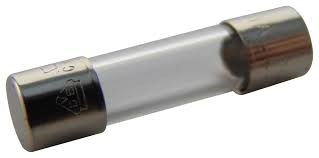Electrical terms your electrician may use when visiting your property
We appreciate that when something goes wrong in your household – getting someone out to repair an issue you may not be familiar with can be a daunting situation. Our nationwide team of expert electricians may discuss the fault you’re experiencing to you at your property and explain how they’re going to go about fixing it.
Some of the key terms and phrases they're likely to use may seem confusing or intimidating; so, we’ve created this Electrical jargon glossary to help you stay in the know – and understand your repair better as it’s being carried out.

Units of Measurements
Our expert electricians may discuss measurements of electricity with you if they diagnose a poor connection within your cables. There are a few different ways your electrician may describe your electrical current. Here are some of the most common.
Ohms: This is the electrical unit that is used for measuring resistance. The symbol is Ω.
Watt: This is a unit of power that the electrician may use – and will be denoted by the use of the letter W.
Voltage: The voltage is the difference in electrical potential between two different points, it can almost be thought of as electrical pressure. Denoted by the letter V or U.
Amperes: This is the term that an electrician may use to describe the flow of the electrical current, often denoted by the letter A.
Kelvin: Kelvins is a unit of measurement used to indicate the quality of indoor lighting. Depending on the number of Kelvins in an indoor lighting fixture, the light will either give off a cooler or warmer tone. The lower the number of Kelvins, the warmer the tone of light will be, and a higher number of Kelvins is indicative of a cooler tone of light.
Cables
There are various types of cables involved in Electricals. These work by providing a low resistance path for the current to flow through – they are made up of one or more conductors and their insulated surroundings. Cables can have poor connections, short, or become faulty which can cause an electrical issue that the electrician will look to repair or replace for you.
Here are some of the most common types of cable you electricians may discuss with you.
Twin and Earth: This cable is the most common cable used in household electrical installations. They are typically used in fixed wire installations such as power supplies for sockets and switches.
Flex: These cables connect your appliances and light fixtures to the fixed wiring (twin and earth).
SWA: (Steel wire armored) This cable is a power and auxiliary control cable, mainly designed for use in mains supply electricity. This cable is used to move power and is typically found beneath the ground in your garden by burying the cable.

Protective devices
Protective devices for electricals ensure that the electrical circuits present in our homes keep us safe. These protective devices keep us safe by detaching the power supply in a circuit through overcurrent protection, which will remove fire hazards and possible electrocution. Protection devices are used to protect circuits from extreme voltages or currents.
There are various types of protective devices – listed below are some of the most common devices you would find in household electrical circuits.
Circuit Breaker: Circuit breakers are used to guard an electrical circuit against a short circuit (a malfunction or fail) otherwise an overload will occur caused by excess current supply. The basic function of the circuit breaker is to stop the flow of current once a fault has occurred.
Fuse: A fuse is used in electrical circuits to protect the circuit from overcurrent. Fuses consist of a metal strip that will liquefy when the flow of current through the circuit is too light. Once the metal strip has melted, this causes the circuit to become open and the supply of electricity is disconnected.
RCD (Residual-current device): The RCD residual current device is a safety device that notices a problem in your home power supply then turns off in 10-15 milliseconds to stop electrocution from occurring.

Earthing and bonding
Earthing and bonding are two unique methods of preventing electric shock that you may hear your electrician discussing.
Earthing: The basic notion of earthing is to limit the length of voltages if you were to touch an exposed conductive part of a circuit. The earth creates a safe route for the current flow instead of causing an electric shock. The best well-known example of this would be the earthing point in every car engine – you would’ve come face to face with this if you’ve ever jump-started a car.
Bonding: The purpose of bonding is to reduce the risk of an electric shock if you find yourself touching metallic parts of the circuit when there is a fault somewhere within the electrical installation. Protective bonding reduces the scale of voltage in this situation.
Test and inspection
Once an electrician has been called to your property – they will look to discover the issue that is causing your fault to occur through tests and inspections on your electrical system.
Below, we have listed some of the tests and inspections that your engineer may look to perform at your property.
Inspection: The act of examining the electrical installation.
Approved Voltage Indicator: A voltage detector that meets the relevant British Standard. Using one is essential to proving an installation/piece of equipment/circuit etc is safe to work on.
Proving Unit: A device that provides a known source of voltage on which an approved Voltage Detector is tested.
Safe Isolation: Safe isolation is checking to ensure that no electricity is present in the circuit about to be worked on
General Jargon
Lastly, here are some general terms that you may hear your engineer discussing when inspecting and diagnosing common electrical faults.
Current carrying capacity: The amount of electrical current a cable or circuit can handle safely.
Electrical potential: The amount of work that is required for an electric charge to move from one point to the other.
Fault current: A current that has appeared from a fault occurring in an electrical installation.
ADS: (Automatic disconnection of supply) – this is what will stop a dangerous situation from arising in the case of a fault. Made up of basic protection and fault protection – it refers to the point that a combination of methods of protection will disconnect the supply of electricity if a fault occurs.
Generator: A device that converts mechanical energy into electrical energy/current.
We hope that this glossary has given a brief understanding of what you may encounter when your electrician attends your property to resolve any electrical issue you are facing. Our engineers are fully vetted and approved by us – if you have any further questions or queries about a repair, do not hesitate to get in contact with us on 0333 370 3331.

